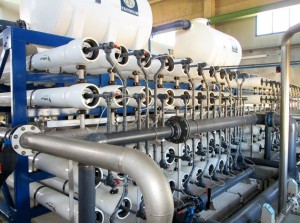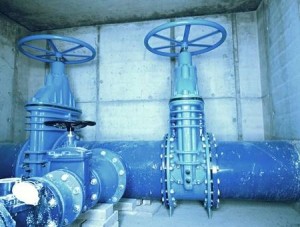

The propose of a drinking water supply system is to provide drinking water with a certain quality and a certain amount to the consumer in a supply area. It consists of a fresh water aquifer, water purification facilities, a drinking water storage, pumping stations and a distribution network. The distribution network consists of large iron distribution pipes with a diameter of 200 mm and smaller pipes which connect the main distribution pipes with the households. In the LCA, we focus on the lager iron distribution pipes. The pipe system can cause failures in water quality, due to a formation of a biofilm or external contamination. The biofilm results from microbiological growth if the water temperature is over around 15 °C and if the drinking water contents enough nutrients. External contamination could can result from ingress of ground water in the pipe due to creaks and breaks in the pipes itself or leaking connections. Creaks and breaks can have their origin in external stresses like frost and traffic load, soil matrix, ground movement or corrosion. Furthermore, the pipe system could lead to a failure in water quantity due to a hydraulic failure of the pipe itself. This could happen due to incrustations (Figure 1) or a biofilm inside the pipe which leads to a reduce of the hydraulically effective pipe diameter. Failures in water quantity could also appear if the pressure and water losses due to creaks and breaks or leaking connections is so high that it is not possible to supply the consumer with the mandatory amount and pressure.
To avoid failures, certain actions are required. To counteract internal contamination or incrustations for example, the pipes are getting flushed in intervals of 2 to 3 years (based on assumptions). By flushing the pipe system with high pressure deposits are washed out of the pipes. Moreover, the distribution system as to be maintained every 10 to 20 years (based on assumptions), depending on the condition of the pipe to repair creaks, breaks or leakages. Due to a average lifetime of 50 to 60 years, the pipes have to be replaced completely after exceeding its useful lifetime.
The figures below show the maintenance strategy for the shortest and longest intervals.
Figure 2: Shortest intervals for the maintenance of the drinking water supply system.
Figure 3: Longest intervals for the maintenance of the drinking water supply system.

